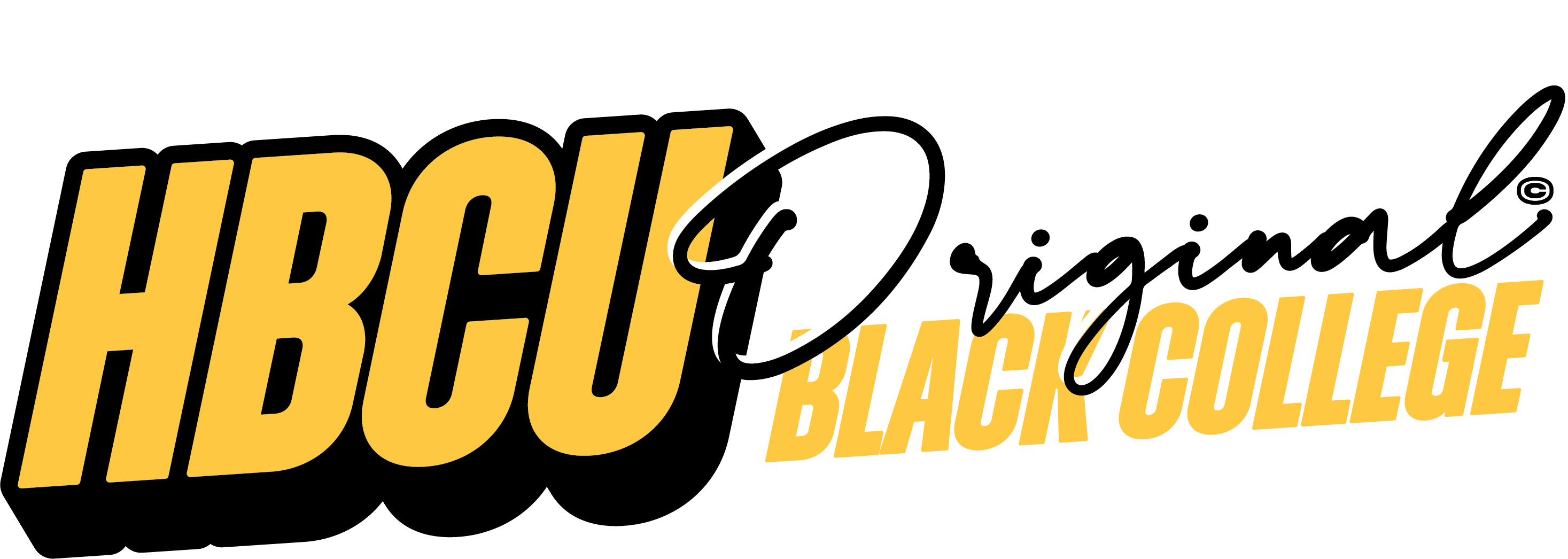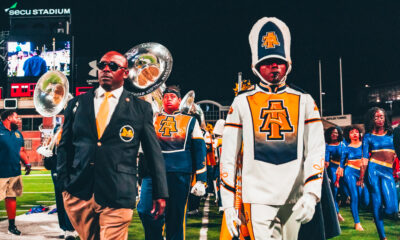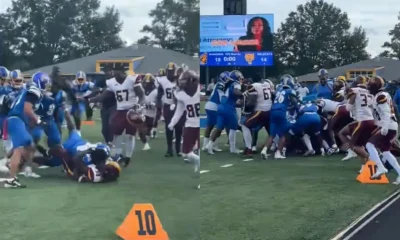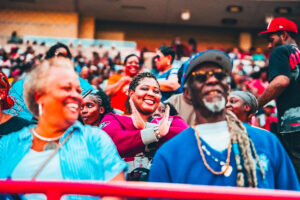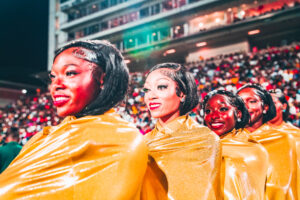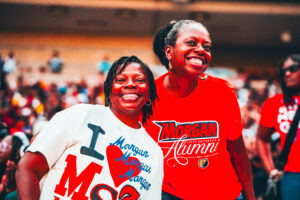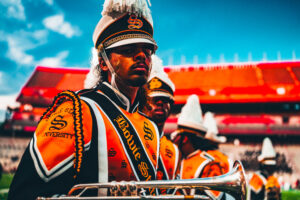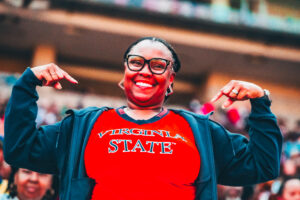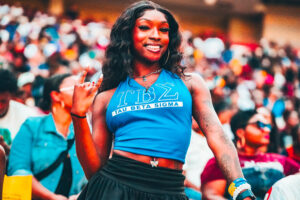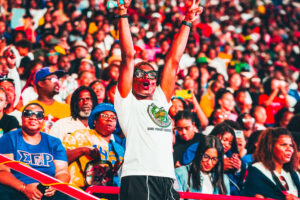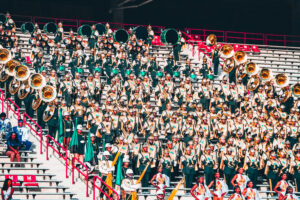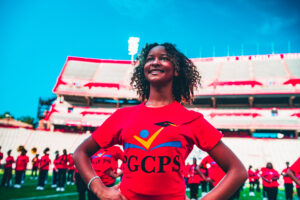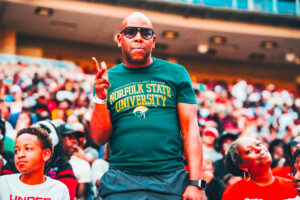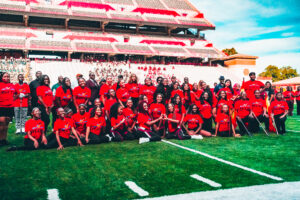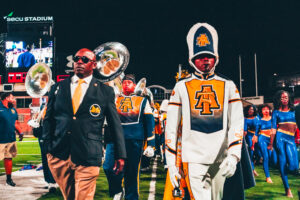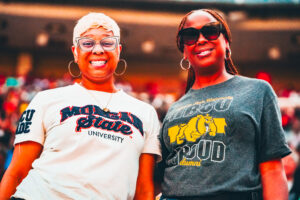Events
Uniting HBCU Athletics: MEAC Commissioner Stills on the Groundbreaking HBC4Us Partnership

A new era is dawning in Black college sports. The HBC4Us Association—a historic alliance between the SWAC, MEAC, SIAC, and CIAA—aims to protect, promote, and advance the legacy of Historically Black Colleges and Universities (HBCUs) through a united voice.
This partnership brings together four influential leaders:
-
Sonja O. Stills, Commissioner, Mid-Eastern Athletic Conference (MEAC)
-
Dr. Charles McClelland, Commissioner, Southwestern Athletic Conference (SWAC)
-
Jackie McWilliams Parker, Commissioner, Central Intercollegiate Athletic Association (CIAA)
-
Dr. Anthony Holloman, Commissioner, Southern Intercollegiate Athletic Conference (SIAC)
A United Vision for HBCU Sports
MEAC Commissioner Sonja Stills described the move as long overdue.
“It’s a way to solidify our group. We’ve been working together since Commissioner Holloman came aboard, meeting monthly. Now, when people—especially Corporate America—approach us, they’ll know they’re dealing with one unified body of institutions.”
At the core of HBC4Us is a shared commitment to preserve HBCU culture, from the pageantry of game day to the traditions that define these schools. The group initially collaborated while advocating to Congress for HBCU athletics, seeking to secure resources and recognition in an evolving college sports environment.
“We want the best for our student-athletes,” Stills emphasized. “This is about keeping HBCU programs strong, relevant, and focused on their mission—graduating student-athletes.”
Tackling Challenges Head-On
Two pressing issues stand out: the transfer portal and NIL (Name, Image, Likeness) opportunities. HBC4Us aims to work with corporate partners to create competitive incentives so that top athletes see HBCUs as their first choice—and their long-term home.
“We want to build a pot of resources for our student-athletes so they can stay, focus, and succeed,” Stills explained.
Building Beyond the Field
HBC4Us will introduce joint programming in:
-
Leadership Development
-
Mental Health Support
-
Conflict Management
These initiatives focus on producing well-rounded athletes prepared for life beyond sports, with scholarships, internships, and mentorship opportunities to support both their athletic and personal growth.
Core Mission Areas of HBC4Us
-
Student-Athlete Leadership & Development – Mentorship, skill building, and holistic support.
-
Preservation of Cultural Heritage – Celebrating the history and traditions of HBCU athletics.
-
Competitive Excellence – Strengthening programs to succeed regionally and nationally.
-
Financial Sustainability & Partnerships – Securing sponsorships and funding for long-term growth.
-
Unified Advocacy – Representing HBCU interests in NCAA governance and public policy.
-
Holistic Welfare – Promoting mental health, academics, and career readiness.
A Friendly Rivalry Remains
While united off the field, the commissioners remain competitive on game day. Stills joked about her upcoming matchup against McClelland at the 2025 MEAC/SWAC Kickoff Challenge on Aug. 23 in Atlanta.
“I love me some Charles McClelland—but I want that hash mark on the MEAC side!”
The MEAC celebrates its 55th anniversary this season. Supporters can donate to the MEAC Foundation’s 55 for 55 Campaign at www.meacsports.com, with proceeds benefiting student-athlete programs across its member schools.
About HBC4Us
Formally established on July 30, 2025, during a leadership retreat at the Salamander Hotel in Washington, D.C., the HBC4Us Association represents the united front of HBCU athletics. It is committed to elevating the profile of these storied programs and ensuring their place in the future of collegiate sports.
“This is a new era of collaboration,” the commissioners said in a joint statement. “We are committed to honoring our legacy while creating opportunities that ensure the competitiveness and sustainability of HBCU athletics for generations to come.”
Campus
The Sound of the Yard: The Legacy of HBCU Marching Bands
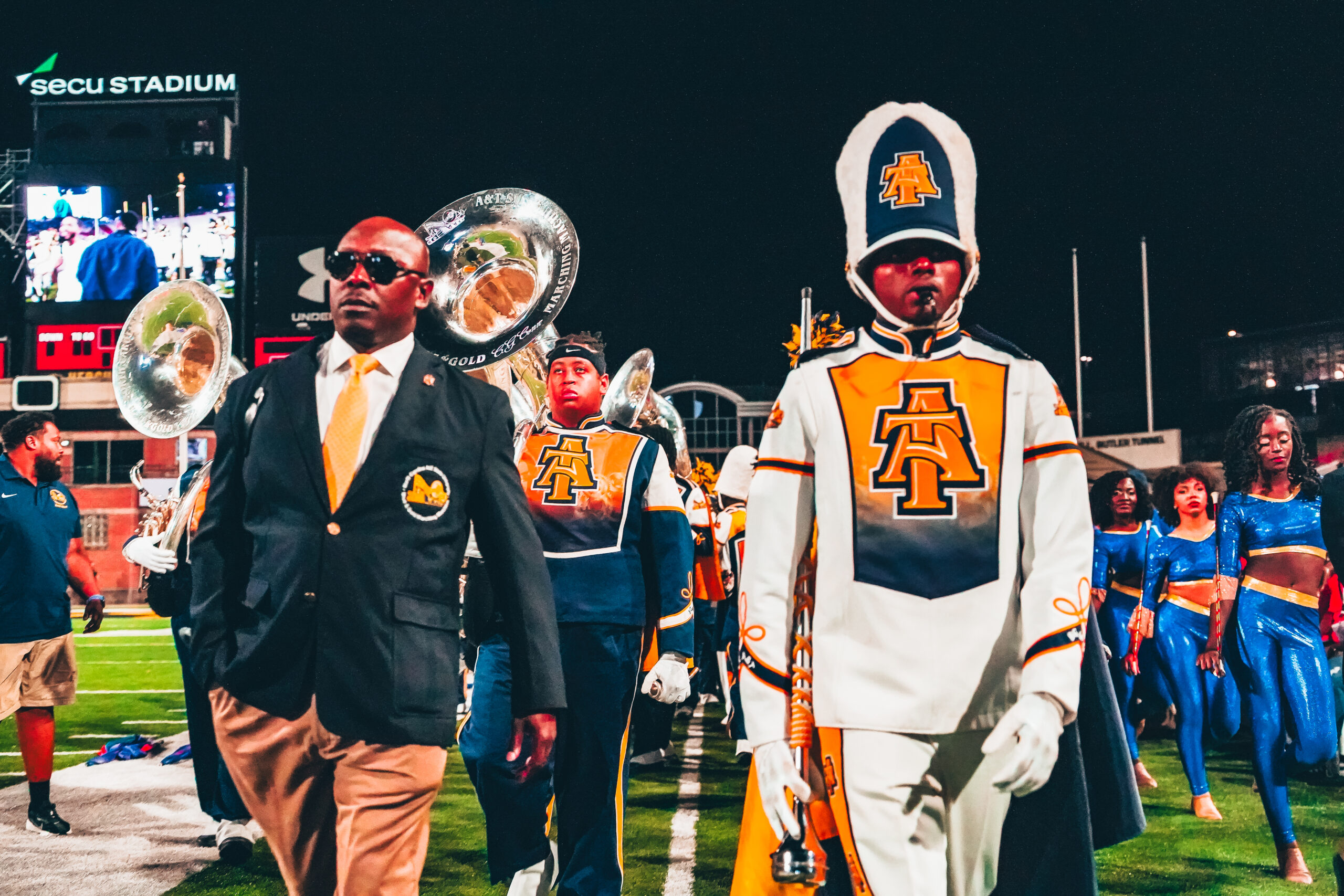
When the drums start rolling and the brass section blasts the first note, something magical happens — the crowd rises, feet start stomping, and the stadium becomes a stage. That’s the power of HBCU marching bands — the lifeblood of the yard and the heartbeat of Black college pride.
Across the country, these bands have redefined what it means to perform. It’s not just about music — it’s about precision, power, and pride. Each halftime show tells a story of community, culture, and creative excellence that stretches from the campus yard to the world stage.
Legendary programs like The Human Jukebox of Southern University and The Sonic Boom of the South from Jackson State University have set the tone for decades, known for their dynamic choreography and iconic sound. The Marching 100 of Florida A&M University revolutionized marching band performance with intricate formations and high-energy brass arrangements, influencing college and high school bands globally.
But they’re not alone in this legacy.
-
The Ocean of Soul (Texas Southern University) brings unmatched groove and funk to every performance.
-
The Aristocrat of Bands (Tennessee State University) made history as the first HBCU band to win a GRAMMY Award in 2023 for “The Urban Hymnal.”
-
The Blue and Gold Marching Machine (North Carolina A&T State University) blends traditional sound with modern flair, leading parades like the Macy’s Thanksgiving Day Parade.
-
The Marching Storm (Prairie View A&M University) commands attention with style and showmanship, competing toe-to-toe with any major college program.
-
The Spartan Legion (Norfolk State University) continues to uphold the proud musical traditions of the MEAC and SWAC.
-
The Marching Maroon & White (Alabama A&M University) exemplifies disciplined performance and HBCU pride.
Additional extraordinary programs include:
-
The Trojan Explosion (Virginia State University) — high-energy performances with innovative formations.
-
The Red Sea of Sound (Winston-Salem State University) — signature style and powerful brass arrangements.
-
The Symphony of Soul (Bowie State University) — blending soulful melodies with marching precision.
-
The Marching Force (Hampton University) — a legacy of excellence on every field.
-
Showtime Band (Howard University) — dynamic, creative, and nationally recognized performances.
-
Sound Machine (North Carolina Central University) — a staple of modern HBCU band excellence.
From local parades to the Honda Battle of the Bands, HBCU bands bring an experience that transcends entertainment — it’s cultural storytelling through sound.
Their influence has reached far beyond the yard — from collaborations with Beyoncé’s Homecoming to halftime shows at the Super Bowl. These bands symbolize the discipline, excellence, and creativity that define HBCU culture.
For the students who march, every note is a tribute — to their ancestors, their schools, and the legacy they represent. The sound of the yard will always be more than music — it’s the soul of the HBCU experience.
#HBCUOriginal | #TheSoundOfTheYard | #BlackCollegeCulture | #HBCUBands
📺 Visit HBCUOriginal.com | 🎥 Watch more at YouTube.com/@THEHBCUORIGINAL
Events
20 Players, 2 Coaches Suspended After Fight at Fort Valley State Homecoming Game
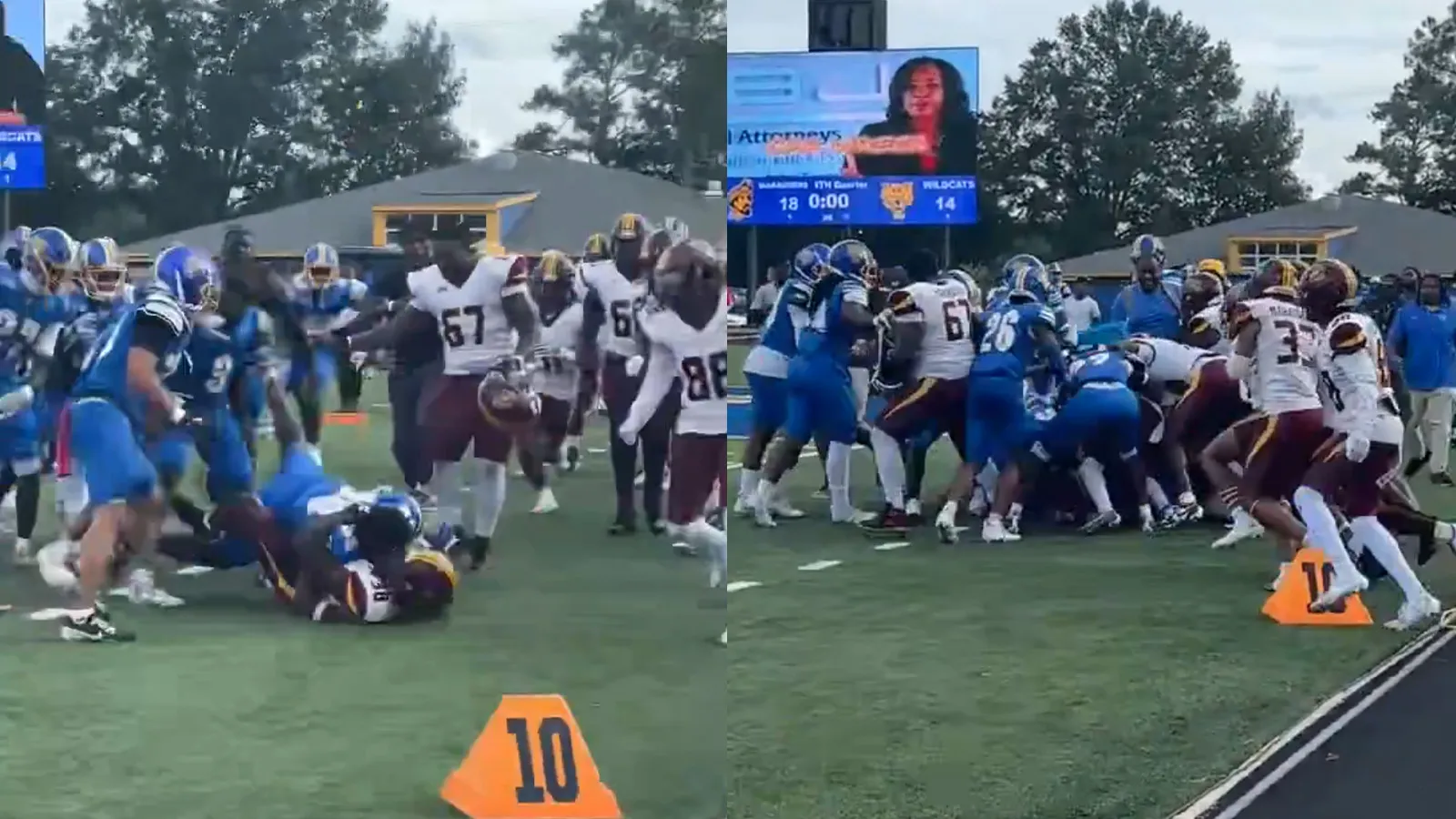
The Southern Intercollegiate Athletic Conference (SIAC) has fined two universities and issued suspensions to 20 players and two coaches following a postgame fight that broke out during Fort Valley State University’s (FVSU) homecoming football game against Central State University (CSU) on Saturday.
According to a statement released Monday, nine Fort Valley State players and 11 from Central State have been suspended for one game. FVSU head coach Marlon Watson and CSU head coach Tony Carter will also serve one-game suspensions. The SIAC did not disclose the amount of the fines issued to either program, citing conference bylaws.
“Acts of unsportsmanlike conduct have no place in intercollegiate athletics or within the Southern Intercollegiate Athletic Conference,” said SIAC Commissioner Anthony Holloman. “I am extremely disappointed that this incident has overshadowed what was otherwise a very competitive football game.”
FVSU, located about 28 miles southwest of Macon, apologized in a statement, saying the fight “does not reflect the values of sportsmanship, integrity, and respect that we uphold as an institution, athletic program, and conference.”
The university added that steps are being taken to ensure athletes understand the importance of representing the Wildcats “with pride and professionalism on and off the field.”
The SIAC said its review determined both institutions violated the league’s code of ethics and conduct. Conference officials emphasized a zero-tolerance policy toward unsportsmanlike behavior and stated they will continue to strengthen measures that discourage such incidents.
A video of the altercation has since gone viral across social media platforms, drawing widespread attention and criticism. The fight marks another controversy for Fort Valley State, which recently faced hazing allegations involving its university band. Several individuals have been arrested in connection with that separate investigation.
“We remain committed to learning from this experience and reinforcing the principles that define what it means to be a Wildcat,” FVSU said.
Campus
The Capitol Battle of the Bands 2025
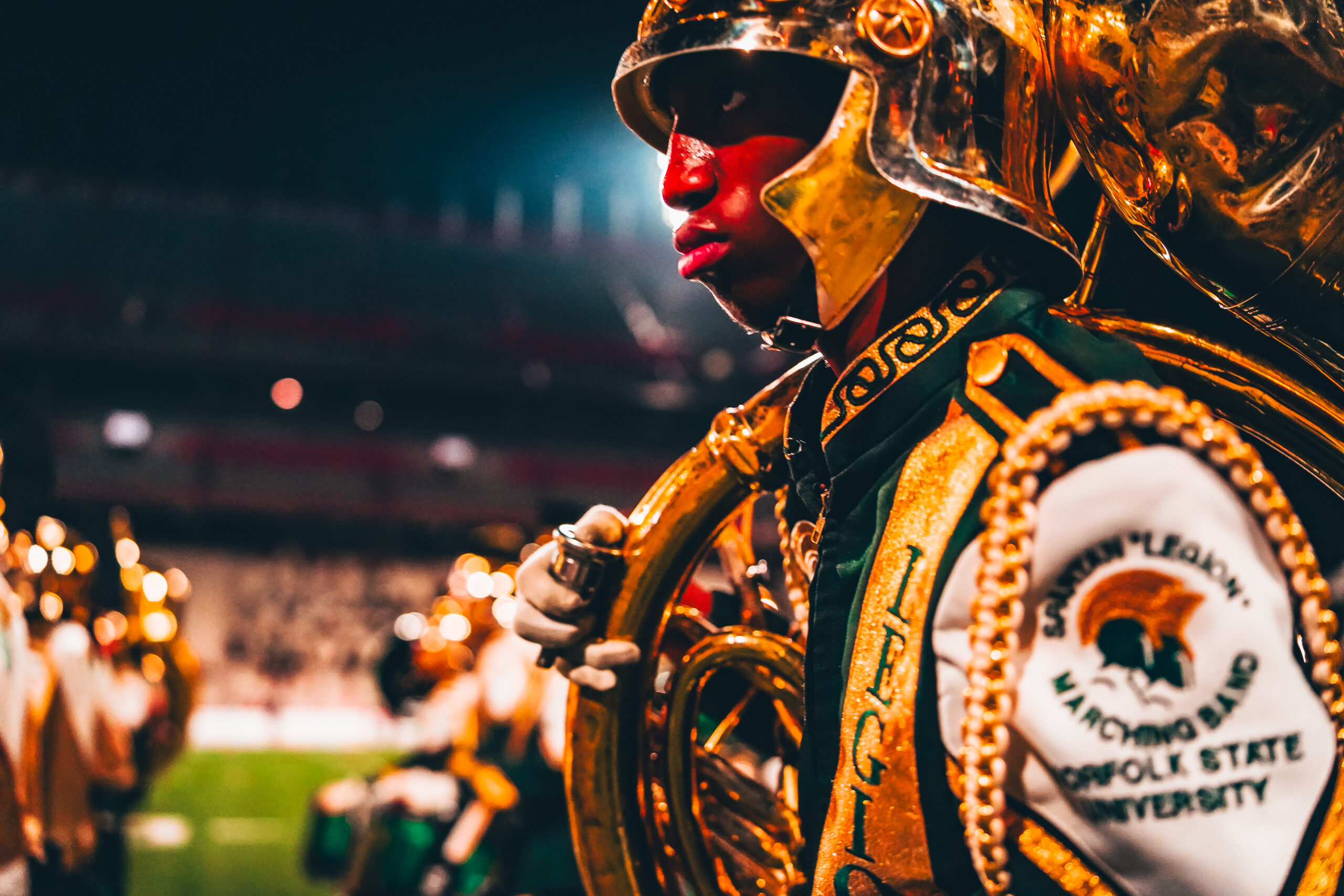
Hosted by High Stepping Nationals | SECU Stadium – College Park, Maryland
The air in College Park was thick with rhythm, pride, and school spirit as the Capitol Battle of the Bands took over SECU Stadium. Hosted by High Stepping Nationals, this electrifying event brought together some of the most dynamic marching bands, drumlines, and spirit teams in the country — all under one roof, all for one culture.
From the first booming drumbeat to the final blast of brass, the stands shook with energy as crowds from across the East Coast gathered to witness HBCU greatness and local high school talent take center stage.
🎶 The Lineup
The field was blessed by the presence of elite bands including:
-
Norfolk State University Spartan Legion
-
North Carolina A&T Blue & Gold Marching Machine
-
Virginia State University Trojan Explosion
-
Winston-Salem State University Red Sea of Sound
-
Bowie State University Symphony of Soul
-
Hampton University Marching Force
-
Howard University Showtime Band
-
North Carolina Central University Sound Machine
-
PGCPS High School Pride, representing the best young talent across Prince George’s County
Each band brought their own flavor — from show-stopping arrangements and precision drills to heart-thumping drumline battles that left the crowd roaring.
💃🏽 The Spirit of the South
The cheerleaders, flag teams, and dance squads elevated the night with unmatched grace and attitude. From the Hampton Force dancers to the WSSU cheerleaders strutting into the stadium, every move reminded the audience that style, pride, and culture are at the heart of every performance.
🥁 The Drumline Faceoff
When Virginia State’s Trojan Explosion Drumline met Norfolk State’s Spartan Legion Drumline on the field, the night hit another level. Beats collided, sticks flew, and the energy was pure adrenaline. This was not just a battle — it was a statement.
🌟 PGCPS Pride
Representing Maryland’s future stars, the PGCPS High School Pride Ensemble showcased young musicians who are already marching toward excellence. Their performance was a reminder that the HBCU legacy is alive and growing strong in local schools.
🎥 Watch the Full Experience
Missed the live show? Don’t worry — you can relive every moment, every note, every move.
📺 Full Highlights: Watch now on YouTube – HBCU Original
🎬 YouTube Channel: @THEHBCUORIGINAL
Events
SWAC Fines Florida A&M $10K, Suspends PA Announcer After Game Day Drama
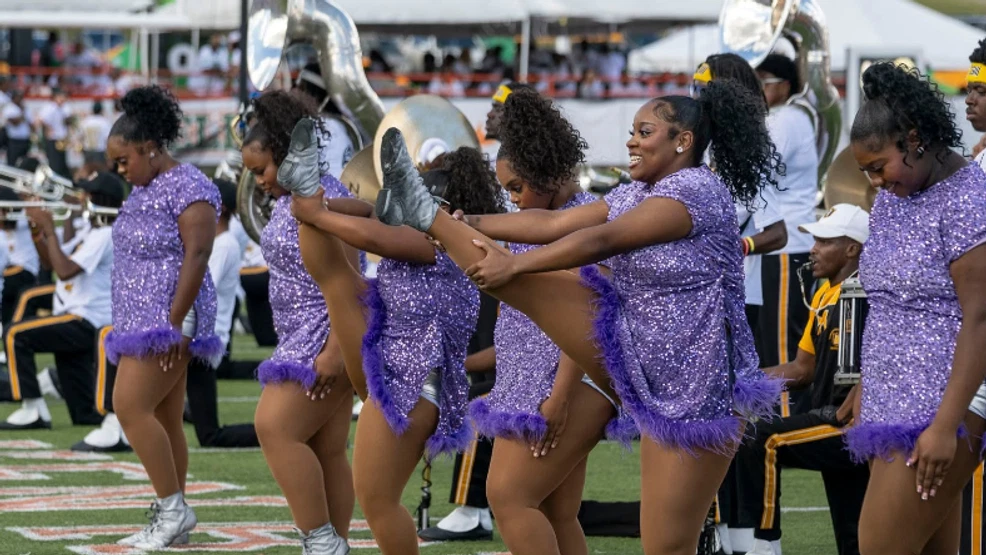
BIRMINGHAM, Ala. – SWAC Slaps Florida A&M with $10K Fine After PA System Gaffe
The Southwestern Athletic Conference (SWAC) is sending a strong message about respect and sportsmanship. Following inappropriate comments made over the public address system during Saturday’s football game against Alabama State University, Florida A&M University has been issued a public reprimand and a $10,000 fine.
The university’s public address announcer will also be sidelined for the next two football games. The announcer had referred to Alabama State’s plus-sized dance team, the Honey Beez, as “the new face of Ozempic,” a weight-loss drug—a remark widely criticized as body-shaming.
“Inappropriate conduct and invective language will always be met with strong action,” the SWAC said. “We take zero tolerance seriously, and this applies to all athletes, staff, and spectators—male or female.”
Florida A&M has apologized, emphasizing that the comment does not reflect the university’s values. The SWAC hopes this incident serves as a reminder that respect and sportsmanship are required across all competitions, including women’s sports.
Events
Trump Directs Millions to HBCUs and Tribal Colleges Amid Broad Education Cuts
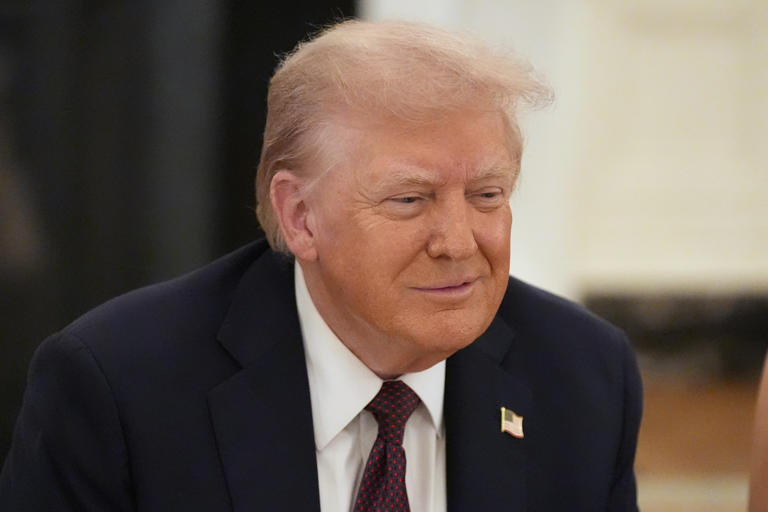
WASHINGTON — The Trump administration announced plans to reallocate nearly $500 million to historically Black colleges and universities (HBCUs) and tribal colleges, even as it makes sharp cuts to other minority-serving institutions.
The Department of Education detailed the shift on Sept. 15, saying the move reflects President Donald Trump’s push to fund his top education priorities. Alongside the new HBCU and tribal funding, the agency will dedicate $500 million to charter schools and invest over $160 million in American history and civics education programs. Officials cited recent reports of declining K-12 achievement as justification for the charter school boost.
“Today, the Department is making three massive investments—moving money away from ineffective, discriminatory programs and into those that actually support student success,” Education Secretary Linda McMahon said in a statement.
Funding reshuffle sparks controversy
The decision comes just days after the administration froze more than $350 million in grants for Minority-Serving Institutions (MSIs), which include campuses serving Hispanic, Asian American, Pacific Islander, and Native Hawaiian students. The administration argues that awarding grants based on racial or ethnic enrollment is unconstitutional.
Trump, who has repeatedly called for eliminating the Education Department altogether, has already proposed a 15% budget cut for the agency in his 2026 plan.
With the latest reallocation, total federal investment in HBCUs for 2025 surpasses $1.34 billion, while tribal colleges will receive more than $108 million.
Praise and pushback
UNCF, a nonprofit that funds scholarships for Black students, applauded the decision. Lodriquez Murray, senior vice president for public policy, called it “nothing short of a godsend for HBCUs,” saying the money will support everything from facility upgrades and laboratory equipment to student and faculty support.
But many education leaders and Democrats criticized the move. Amanda Fuchs Miller, a former deputy assistant secretary under President Joe Biden, argued the administration had exceeded its authority. “Congress decides how money is spent,” she wrote. “The Department of Ed cannot just defund authorized programs and redirect that money for political reasons.”
Deborah Santiago of Excelencia in Education said the changes raise constitutional questions, while Mamie Voight of the Institute for Higher Education Policy warned they pit “resources for one community against resources for another,” creating long-term challenges for students—especially at Hispanic-serving institutions.
Political backdrop
Trump has made highly visible efforts to align himself with HBCUs, part of a broader strategy to appeal to Black voters. Earlier this year, he signed an executive order promoting “excellence and innovation” at HBCUs, though critics described it as mostly symbolic.
McMahon defended the funding overhaul: “We will use every available tool to meaningfully advance educational outcomes and ensure every American has the opportunity to succeed.”
The changes affect the current budget year, which expires Sept. 30 unless Congress passes a new spending bill or temporary funding measure.
-
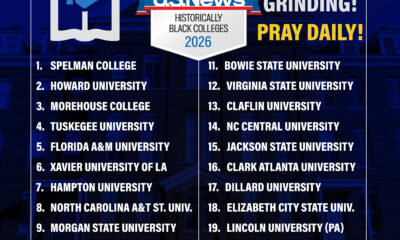
 Campus4 weeks ago
Campus4 weeks ago🏆 2026 U.S. News & World Report — Top HBCUs
-
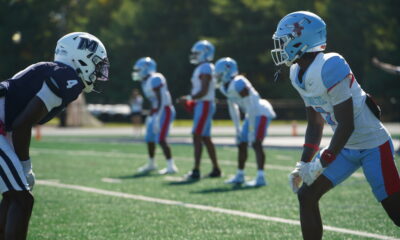
 HBCU ORIGINAL2 weeks ago
HBCU ORIGINAL2 weeks agoDelaware State Falls Short vs. Monmouth, 49–38
-
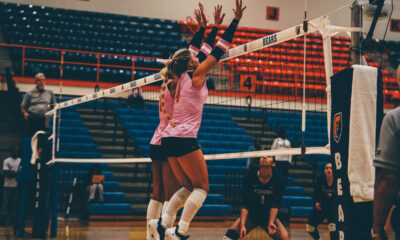
 Sports3 weeks ago
Sports3 weeks ago“Morgan State Comes Back to Defeat North Carolina Central University in Five-Set Thriller”
-
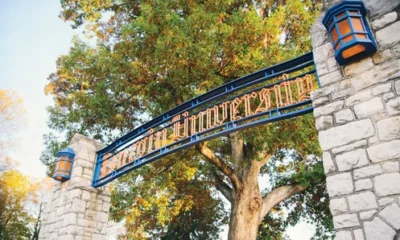
 Campus3 weeks ago
Campus3 weeks agoForged in Faith, Renamed for Freedom: The Lincoln University Story
-
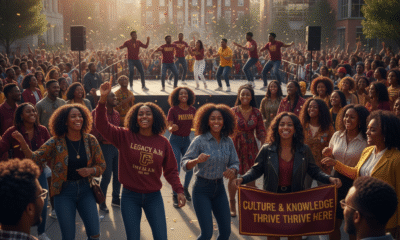
 Campus3 weeks ago
Campus3 weeks ago“Navigating Identity at HBCUs: Where Culture Meets Academic Excellence”
-
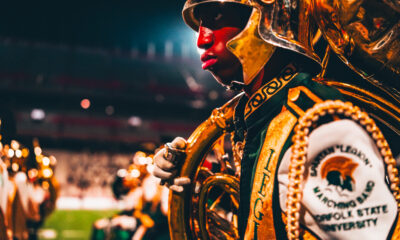
 Campus2 weeks ago
Campus2 weeks agoThe Capitol Battle of the Bands 2025
-
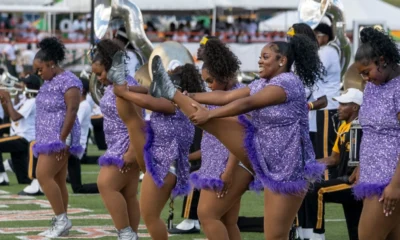
 Events3 weeks ago
Events3 weeks agoSWAC Fines Florida A&M $10K, Suspends PA Announcer After Game Day Drama
-

 Campus3 weeks ago
Campus3 weeks agoTomorrow’s Leaders, Today’s Tech: How HBCUs are Shaping the Future
